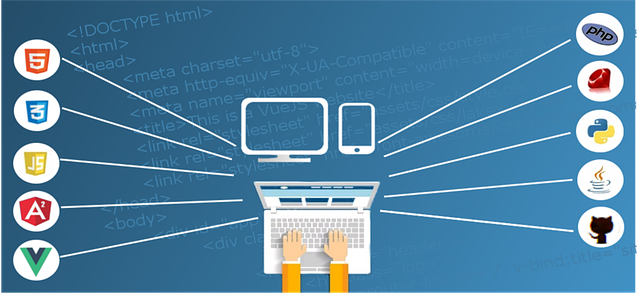What is Enterprise Software as a Service (SaaS)? How does it impact the day-to-day operation of an organization? And what are its advantages and potential challenges? These are pertinent questions that business owners, IT managers, and decision-makers grapple with when deliberating on their digital or cloud computing strategies.
A prevailing challenge is defining and understanding the concept of Enterprise SaaS. With some companies still maneuvering through the multifaceted configurations of digital transformation, uncertainties abound. Gartner shows that while 90% of organizations use cloud services, they only dedicate an average of 19% of their IT budgets towards this. This low figure reveals the shortcomings associated with pervasive apprehension and confusion regarding SaaS, specifically at the enterprise level. Accenture also pointed out that while 77% of enterprises have at least one application or a part of their enterprise computing infrastructure in the cloud, there still exists a knowledge gap about the proper deployment and optimal utilization of enterprise SaaS to drive business value and growth. This article then proposes to demystify Enterprise SaaS and highlight its fundamental role in modern business operations.
In this article, You will learn about the critical features of Enterprise SaaS, its potential benefits, and pitfalls. The discussion will also delve into the fundamental principles guiding the deployment and adoption of Enterprise SaaS. We will examine the journey of transitioning classic legacy systems into agile cloud-based solutions, backed by real-world case study examples.
The information contained herein will provide valuable insights for business executives, IT professionals, and stakeholders looking to leverage the power of Enterprise SaaS to streamline their operations, improve scalability, and foster growth. This article is your guide to understanding Enterprise SaaS in the digital age.

Understanding the Definitions of Enterprise SaaS
Enterprise SaaS, or Software as a Service, is a cloud-based software distribution model where a service provider hosts applications for customers who can access them over the Internet.
Unlike traditional software which needs to be installed on an individual’s computer or a company’s servers, SaaS applications are hosted on the provider’s servers and customers access the software typically through a web browser.
This model allows businesses to use software on a subscription basis, easing the burden of ongoing maintenance and updates, and reducing the need for large upfront capital investments.
‘Enterprise’ refers to the fact that these SaaS solutions are aimed at large businesses or corporations with complex needs, often requiring advanced features, customization, and support.
Business enterprise applications
Microsoft 365 Apps for Enterprise
Enterprise Business apps generator
Breaking the Illusion: The Truth Behind Enterprise SaaS
Understanding Enterprise SaaS
Enterprise SaaS (Software as a Service), a subcategory of cloud computing, represents a method of software delivery where applications are hosted remotely by a vendor or service provider and then made available to customers over the internet. It eliminates the expense of hardware acquisition, provisioning, and maintenance, as well as software licensing, installation, and support. Instead of purchasing software to install, or additional hardware to support it, customers subscribe to a SaaS offering. They frequently opt for this choice because it allows them to scale use up and down based on operational needs.
In addition, the software applications are accessible from any internet-connected device, which allows ease of access for individuals no matter their location. As such, it is an increasingly popular delivery model for a broad range of business applications, including office and messaging software, payroll processing software, DBMS software, management software, and notably CRM (customer relationship management), among others.
The Distinction of Enterprise SaaS
Although SaaS can be adopted by businesses of any size, enterprise SaaS distinguishes itself by its capabilities to meet the complex needs of larger businesses. Compared to regular SaaS, enterprise SaaS frequently offers more elaborate features, higher levels of security and compliance, comprehensive analytics, and better support for mobile access. It also often supports integrations with other enterprise software or systems.
Therefore, when picking an enterprise SaaS solution, it is necessary for businesses to consider several factors. These include the solution’s basic and advanced features, security measures, ease of use and mobility support, customization capabilities, integration possibilities, and vendor reputation and support capacities.
But what elements are executives really looking for in an enterprise SaaS? Here’s a list that can provide some insight:
- Scalability: As businesses grow, their software should seamlessly grow with them.
- Flexibility: Enterprise SaaS should be flexible enough to be tailored to meet unique business requirements.
- Reliability: Companies need an assurance that the software will be available whenever they need it.
- Security: Given the sensitive nature of business data, security is a prime concern.
Trends indicate that more and more businesses are migrating toward SaaS solutions. The value that enterprise SaaS presents in form of cost efficiency, scalability, easy access, and focus on core business activities, among other benefits, is a powerful motivator for businesses to embrace this model. Ultimately, in an era defined by digital evolution, enterprise SaaS presents numerous opportunities for businesses to streamline their operations and achieve a competitive edge.
Challenging the Status Quo: Deconstructing Common Myths About Enterprise SaaS
Understanding Enterprise SaaS
What if the future of business operations, data management and customer engagement lies not in traditional software installations, but in a new paradigm? That paradigm is Enterprise Software-as-a-Service, or enterprise SaaS. This concept taps into the potential of cloud computing, shaping a new way for businesses to use software. Essentially, it refers to business-level software that is hosted online by a provider and accessed by users over the internet.
Enterprise SaaS is not merely about using software; it defines how the software is delivered, its pricing structure, customization, updates and overall handling. While the conventional approach requires businesses to buy, install, maintain and continually update their software, the SaaS design employs a subscription model where the service provider shoulders these responsibilities. Moreover, this model supports client accessibility from any internet-enabled device. It is the combination of these features that elevates enterprise SaaS far above the traditional software usage landscape.
Tackling the Hurdles of Enterprise SaaS Adoption
Inevitably, transitioning from the traditional approach to the SaaS model presents challenges. Indeed, introducing any new technology into a thriving enterprise often causes waves. One key difficulty lies in integrating SaaS solutions with current business infrastructure. Many businesses find their existing data management systems incompatible with these new solutions, necessitating significant and disruptive restructuring.
Additional issues arise surrounding cybersecurity. Since enterprise SaaS solutions are cloud-based, some companies express concern about the vulnerable nature of online data storage. Despite these challenges, it is important to remember that with the right measures in place, SaaS can offer equivalent or even superior data security compared to traditional software solutions.
Efficient and Successful Enterprise SaaS Implementation
Overcoming the above challenges becomes easier by focusing on best practice principles in enterprise SaaS adoption. The first crucial step is user training. Clear understanding of how to best utilize the new software drives user acceptability and maximizes productivity. This process should ideally involve all levels of the organization to foster collective competency in the new system.
Data migration is another vital area. It’s vital to ensure data moved from your current system to the new SaaS solution is secure, consistent and accurate, thus avoiding any disruption in business continuity. Enlightened businesses make use of migration tools or expert assistance to get this done competently.
In conclusion, while implementation of enterprise SaaS may have its challenges, employing best practices and taking care to mitigate potential issues results in resilience, increased productivity, cost efficiency, and overall business growth.
Redefining the Future: The Inescapable Impact of Enterprise SaaS on Business Operations
Evolution of Business Software: The SaaS Concept
Isn’t it intriguing how software applications have revolutionized business operations drastically? The concept which once involved in-house software management, with data centers hosting countless servers, has now morphed into a more streamlined, cost-effective approach known as Software as a Service (SaaS). Enterprise SaaS is specifically designed for large corporations, offering strategic solutions to complex IT problems. A multi-tenant architecture allows users to utilize a single version of a business application. Every customer’s data is secure and isolated from the rest in this model. Enterprises relish the benefits of SaaS such as reduced IT support costs, lower capital expenditure, and easy accessibility from any Internet-enabled location. In essence, enterprise SaaS provides synergy and potency, transforming the way businesses operate.
The Challenge in Implementing SaaS
Transitioning to enterprise SaaS presents its challenges. Firstly, integrating SaaS options into an enterprise’s current IT infrastructure poses a significant issue. Most organizations have legacy systems in place, which are incompatible with newer SaaS frameworks, leading to a potential functionality gap. An additional problem arises with data security. Agreeably, while SaaS providers ensure top-tier encryption and security standards, data breaches can still occur. Enterprises often experience apprehension about housing their information in an externally managed system. Lastly, SaaS offers less customization options than traditional software, limiting a company’s flexibility to tailor solutions to specific circumstances or operations. Therefore, enterprises must critically evaluate whether the benefits of enterprise SaaS overshadow these potential pitfalls.
Best Practices for Enterprise SaaS Implementation
Nonetheless, successful enterprise SaaS implementation stories abound. Salesforce, for instance, used their CRM solution to carve out a niche in the market for themselves. Their cloud-based service model has provided robust and versatile options for sales management, customer service, and marketing automation. Similarly, Adobe’s transition to the Creative Cloud suite, a SaaS model, has been a boon for the creative community. Both businesses and individual users can now access Adobe’s suite of services from anywhere, anytime. For large corporations, Google’s G Suite has proven a cost-effective and efficient business solution. The integrated workspace allows for enhanced collaboration, streamlined document management, and advanced data analytics. The key to success is to identify the correct enterprise SaaS model that aligns with the company’s requirements and working style, ensuring a smooth transition and robust data security measures.
Conclusion
Is your organization ready to embrace the resource optimization, effective cost management, and unprecedented scalability that enterprise SaaS offers? This modern and evolving technology solution is not just about transitioning software on the cloud; it is about strategizing a shift in the business paradigm itself. The future of organizational efficiency, cost-effectiveness, and competitiveness lies within the realm of enterprise SaaS. It offers a business model that aligns with ever-changing market dynamics and offers agility, which is a survival imperative in today’s fast-paced business world.
We hope this article has sparked your interest in the many benefits of enterprise SaaS, as well as how it operates within a business context. Gathering knowledge and staying informed are key elements in making effective decisions that align with your company’s strategic goals. We invite you to follow our blog for insightful and timely articles on this and an array of other relevant topics. Our objective is to offer you a variety of perspectives and share expert insights to support your decision-making processes.
We wish to impart that your business journey does not end here. The world of technology is an ever-evolving one, with new developments around every corner. Our subsequent articles aim to keep you abreast of these changes, break them down, and present them in a way that can positively impact your business. There is always more to look forward to if you stay tuned with us, wait for our new releases and delve deeper into the insights they present. Every new article brings a promise of knowledge and vision that can guide your enterprise’s technology roadmap. Together, let’s navigate the future of SaaS technology and its promising impact on the world of enterprise business.
F.A.Q.
Sure, here you go:
1. What exactly is Enterprise SaaS?
Enterprise SaaS (Software as a Service) is a cloud-based service where the business software and associated data are centrally hosted on the internet. It is used by enterprises where the software is licensed on a subscription basis.
2. How does Enterprise SaaS work?
With Enterprise SaaS applications, software and data are stored on the service provider’s servers. Users can access the software and its features via a web browser, eliminating the need for installing and downloading software.
3. What are the benefits of Enterprise SaaS?
Enterprise SaaS offers many benefits like flexibility, scalability, and cost-effectiveness. It eliminates the need for companies to install and run applications on their own computers or in their own data centers, reducing infrastructure and maintenance costs.
4. What is the difference between Enterprise SaaS and regular SaaS?
The main difference is that Enterprise SaaS solutions are designed to be capable of handling complex, large-scale business requirements. While standard SaaS solutions are generally targeted towards smaller businesses with more straightforward needs.
5. Are there any risks involved with Enterprise SaaS?
As with any technology, there are some risks associated with Enterprise SaaS. These may include data security concerns, dependency on the vendor’s reliability, and potential issues with integration and compatibility.



